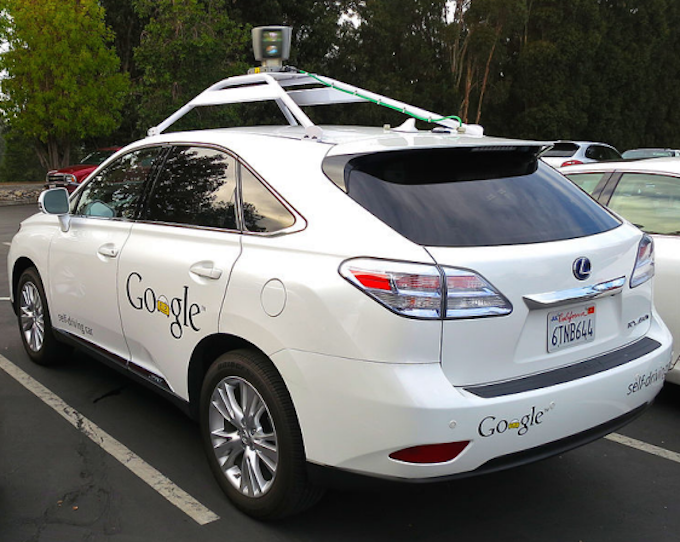DMV Report: Google Self-Driving Car Hit City Bus While Changing Lanes
According to the report [PDF] (first noted by writer Mark Harris on Twitter), the Google autonomous vehicle, or AV, was traveling in autonomous mode in the right-hand lane, as it was attempting to turn right on a red light on Feb. 14.
But the Google AV had to stop and go around sandbags that were positioned around a storm drain in its way, so when the light turned green, the car let a few cars pass and then started to move into the center of the lane to pass the sand bags.
“A public transit bus was approaching from behind,” the report says. “The Google AV test driver saw the bus approaching in the left side mirror but believed the bus would stop or slow to allow the Google AV to continue.”
That wasn’t the case: about three seconds later, the Google AV came into contact with the side of the bus, the report says. The car was going less than 2 mph, while the bus was traveling at 15 mph when they hit each other. The Google vehicle sustained body damage to the left front fender, the left front wheel and one of its driver’s -side sensors. There were no injuries reported at the scene.
In Google’s February monthly report for its self-driving cars, which will be published on March 1, the company will provide further details of the Feb. 14 incident. In the report, which Consumerist has read, the company calls the Valentine’s Day incident a “tricky set of circumstances” that’s helped it “improve an important skill for navigating similar roads.”
The company echoes its report to the DMV, saying that the car and the test driver both predicted that the bus would yield to the vehicle, because they were ahead of it.
“And we can imagine the bus driver assumed we were going to stay put,” the report says. “Unfortunately, all these assumptions led us to the same spot in the lane at the same time,” adding that this isn’t a situation unique to self-driving vehicles, but a type of misunderstanding that humans encounter on the road every day .
Though trying to predict each other’s movements is a normal part of driving, Google says, the company does acknowledge that its car wasn’t blameless.
“In this case, we clearly bear some responsibility, because if our car hadn’t moved there wouldn’t have been a collision,” the report says. “That said, our test driver believed the bus was going to slow or stop to allow us to merge into the traffic, and that there would be sufficient space to do that.”
The company says it’s reviewed the incident in its simulator and has tweaked its software as a result.
“From now on, our cars will more deeply understand that buses (and other large vehicles) are less likely to yield to us than other types of vehicles, and we hope to handle situations like this more gracefully in the future,” the report says.
Want more consumer news? Visit our parent organization, Consumer Reports, for the latest on scams, recalls, and other consumer issues.


